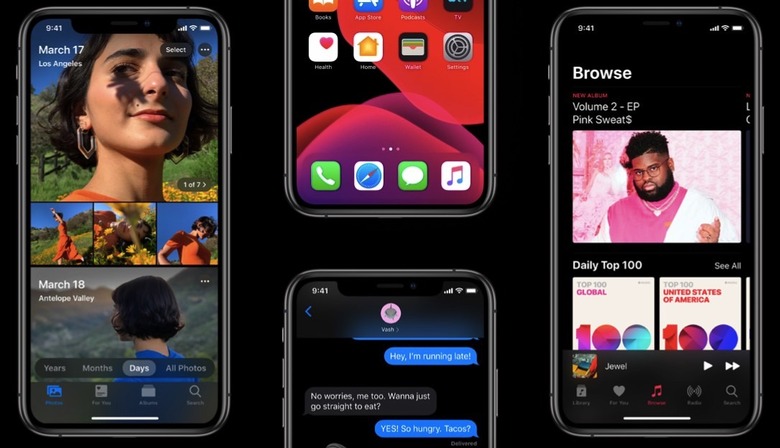iOS 13.7 Now Available With COVID-19 Exposure Notifications Express
- Apple rolled out iOS 13.7 and iPadOS 13.7 for iPhone and iPad on Tuesday.
- iOS 13.7 adds a new Exposure Notifications Express system, which allows users to enable the feature directly from the Settings app on their iPhone.
- This might be the last numbered iOS 13 update ahead of the launch of iOS 14 this fall.
After seeding a beta version of the update last week, Apple finally rolled out iOS 13.7 to all eligible iPhone users on Tuesday, bringing Exposure Notifications Express to the masses. This new system lets iPhone users opt-in for contact tracing without the need for a separate app, though the apps that have already been released will still work. Apple and Google say that 25 states are exploring using the system, which would cover 55% of the population and could be an important tool in the fall if the COVID-19 infection rate starts to spike again.
According to Apple's release notes, iOS 13.7 also adds all-new Memoji stickers and the ability to share iCloud Drive folders from the Files app, in addition to a number of bug fixes and improvements.
Apple and Google shared the following statement regarding the iOS 13.7 release:
As the next step in our work with public health authorities on Exposure Notifications, we are making it easier and faster for them to use the Exposure Notifications System without the need for them to build and maintain an app. Exposure Notifications Express provides another option for public health authorities to supplement their existing contact tracing operations with technology without compromising on the project's core tenets of user privacy and security. Existing apps using the Exposure Notification API will be compatible with Exposure Notifications Express, and we are committed to supporting public health authorities that have deployed or are building custom apps.
If you're wondering whether or not your device is compatible with iOS 13.7 or iPadOS 13.7, we put together a full list below that contains every compatible device. If your device is on there, you're good to go:
- iPhone 11
- iPhone 11 Pro
- iPhone 11 Pro Max
- iPhone XS
- iPhone XS Max
- iPhone XR
- iPhone X
- iPhone 8
- iPhone 8 Plus
- iPhone 7
- iPhone 7 Plus
- iPhone 6s
- iPhone 6s Plus
- iPhone SE (1st generation)
- iPhone SE (2nd generation)
- iPod touch (7th generation)
- iPad Pro 12.9-inch (4th generation)
- iPad Pro 11-inch (2nd generation)
- iPad Pro 12.9-inch (3rd generation)
- iPad Pro 11-inch (1st generation)
- iPad Pro 12.9-inch (2nd generation)
- iPad Pro 12.9-inch (1st generation)
- iPad Pro 10.5-inch
- iPad Pro 9.7-inch
- iPad (7th generation)
- iPad (6th generation)
- iPad (5th generation)
- iPad mini (5th generation)
- iPad mini 4
- iPad Air (3rd generation)
- iPad Air 2
As we're sure you know by now, installing a new iOS or iPadOS update on your iPhone, iPad, or iPod touch couldn't be easier. Just navigate to Settings > General > Software Update and then tap "Download and Install" at the bottom of that page. If you want, you can also install the update through iTunes by connecting your iOS device to a computer. Whichever method you choose, just make sure to back up your device before installing the update.
